Service of the future: opportunities and risks
Hello, my name is Andrei Popov, I work at Raiffeisenbank in the CIO position.
A couple of weeks ago, a colleague and I (hi, claxton !) Visited the Google I / O conference. While the topic is still hot and relevant, I will share with you my impressions and observations. I will not talk about hard-core technologies - you can watch it yourself on the I / O channel . Purely personal IMHO.
Future directions
This year, the focus of attention was declared artificial intelligence. In the most different forms and methods of implementation, but absolutely all services were penetrated by it - from “intelligent” voice recognition, to behavioral analysis of user actions. We saw a future in which communications with machines are becoming more similar to communicating with people, and about the user you can receive and process any information from mail, search queries, our photos and videos, payments in Android Pay, actions on social networks and t .P. So far this is a discussion at a fundamental level. But we understand that the next stage is applied, and what sounded as a concept today will change the landscape of the market tomorrow. So, what awaits us?
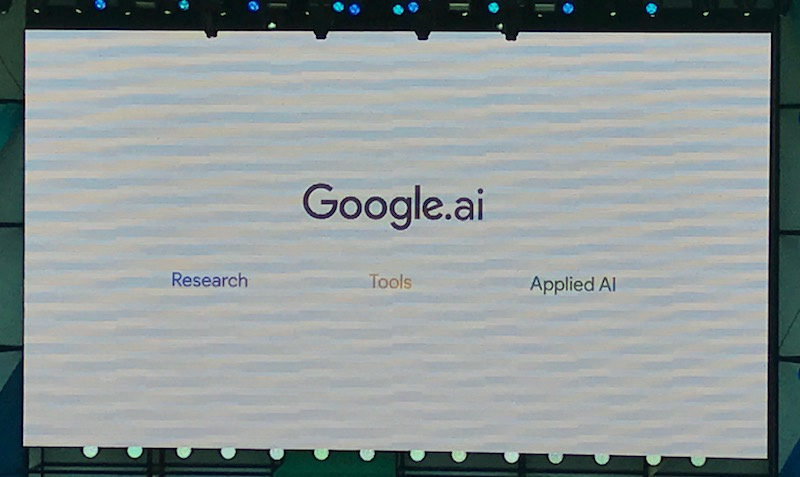
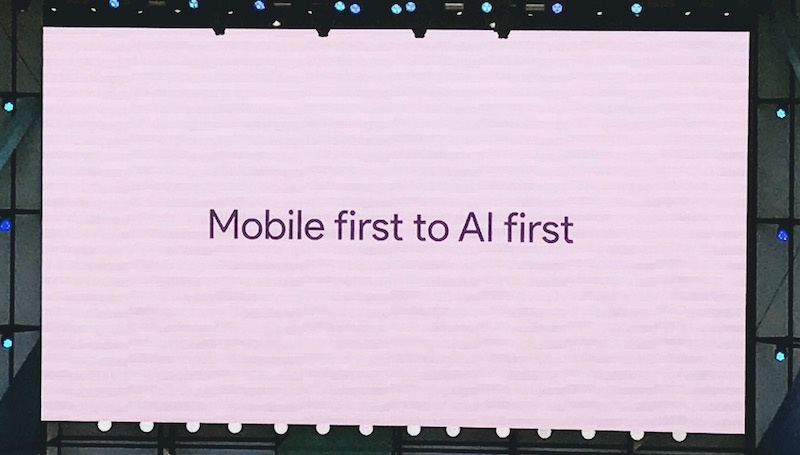
Disassemble and sell
All changes and “skills” of services presented at the conference solve two problems: user comfort and new business opportunities. For example, Google showed how they made their Photo app even smarter. Now it distinguishes between people, better compiles from a series of photographs of the story, tracks where it was, suggests modifying certain photographs to make them look better. It would seem obvious functions, but around them you can build a completely new solution. In particular, to pull out any data from a photo - with photo of checks to collect information on purchases, from a photo from holiday about locations and other. At first glance, it is convenient, first of all, for the user. But in fact, it is also interesting for a business that will get access to this information and use it for analysis, for a quality offer to the client. Such a double level of value was traced in almost all the services discussed.

A nice robot to talk to
Google vividly showed how the approach to the dialogue between the car and the person qualitatively changed over the year.
Much of what we previously could only do in the form of buttons and mechanistic commands, today translates into a plane of much more natural communication. Machines understand text queries better, can respond to different words, and not just a fixed set of commands, even understand how the conversation goes. For example, Google presented a new version of the autoresponder in Gmail. A year ago it was a rather strange service. Now he tracks the conversation in correspondence and offers answers that, at least in the English version, looked to the place - in the style of communication with a specific addressee and in the context of the topic under discussion.
A similar level of humanization of the machine was presented at a lecture on the creation of voice interfaces . Now our typical IVR sounds like a robot, reacts like a robot - only on specific commands. Communication with him is not very attractive for a person, since you need to memorize commands, adapt to his speed of reproduction and perception. This is not a dialogue. Communication with the machine, responding only to the team, was painful. Now, like the Gmail answering machine, the voice assistant can understand words from the context, perceives equivalent phrases - and the user gets the feeling that this is normal communication. This is a story that can also affect a business, the building of remote service channels, the work of call centers, the expansion of the functionality of chat bots in terms of advising clients.
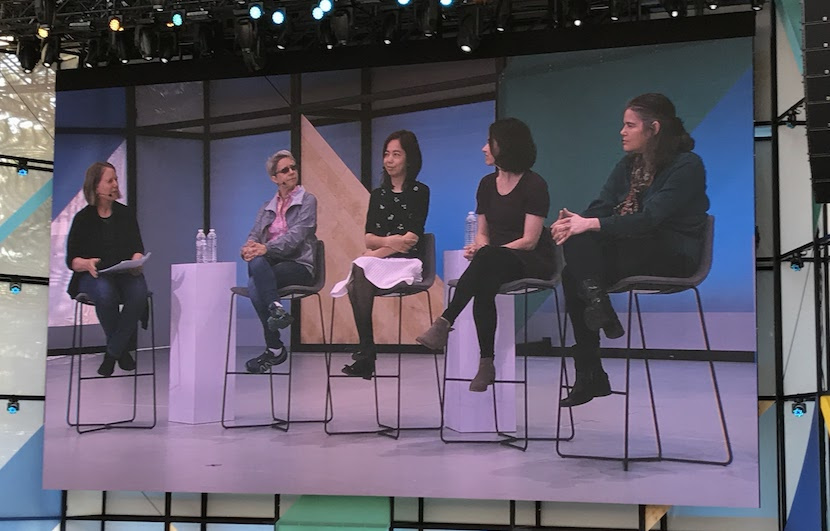
Threat to banks DETECTED
On the one hand, Google tried to position all these services as a well thought out system, in which all the components are put together in a beautiful mosaic, intertwined with each other, complementing each other. You see this as really something big that will come for us for all, create a new level of comfort and opportunity.
But in several sessions, this was discussed in terms of creating applications, showing how using this ecosystem, Google can elegantly and naturally do the work for you to collect information about the user, engage in collaboration and sell products to him so that he comes back. If you take it abstract, it looks really cool for the user. But from the point of view of the banking market, this is already perceived as a challenge and even a threat. Google, of course, does not want to be a bank. But through the tools they give to end-application developers, they can create ecosystems that, without being in direct conflict with banks, have the power to change their role very much. The bank risks being in the backyard: of those who create value and serve customers turn into those who simply process payments.
Will the situation evolve in such a scenario? A matter of time and how banks adapt to new conditions. This risk did not arise now, they talked a lot about it. But it was at this event that it became clear how large technology companies would attack the financial industry. Previously, discussions were held on whether Apple, Facebook, Google will open its bank. Now it is clear that the path is quite different - the ecosystems they create can simply force out banks for secondary roles in the process of communication with the client. For example, on June 5, Apple at WWDC announced transfers between Apple Pay users - illustrating the ecosystem (iMessage + Apple Pay) as a kind of challenge for banks.
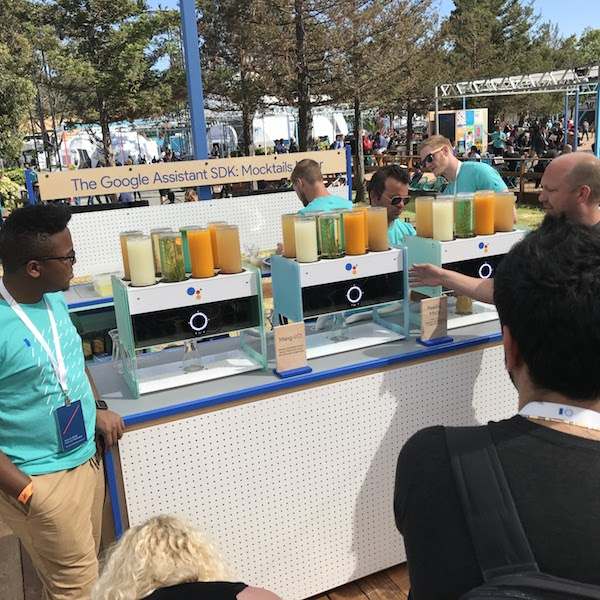
New threats - new opportunities
On the other hand, I see this as an opportunity. We can use the same tools, the same platforms and solutions that Google offers to application developers. So, we get access to this analytics, and the opportunity to understand who this user is, who is also our potential or current client.
I was not scared by this story. She described for us a new field in which there would still be a lot of movement, many new bouts. We have entered a very interesting new phase of technologies that create a new danger for us as a classic industry, but also a new opportunity. You just need to work more and better.
Postscript: international organization
I was for the first time at IT conferences of this magnitude. There is not a single professional event in Russia in our industry that would gather thousands of participants over the course of three days. The organizers thought over everything so that the guests were comfortable, even to such “trifles” as possible burns and dehydration from the hot Californian sun: besides the fact that each participant’s welcome package contained a sun protection cream, dispensers with san block and went rickshaws with water cisterns.
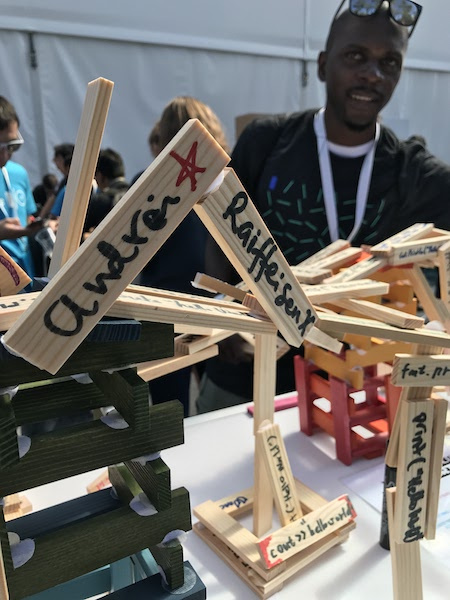
The technical organization was expected to be flawless. But I especially liked the variety of formats: in addition to standard lectures and discussions, there were laboratories where participants were given the opportunity to get information in practice. A new session format for me is “office hours”. Imagine you came to your colleague with your question for discussion, but a colleague is an expert from Google. In fact, this is an opportunity to get advice in a democratic format of the dialogue of colleagues. Everyone who came could find a convenient form. This experience we will use in our events.
')
Source: https://habr.com/ru/post/330636/
All Articles